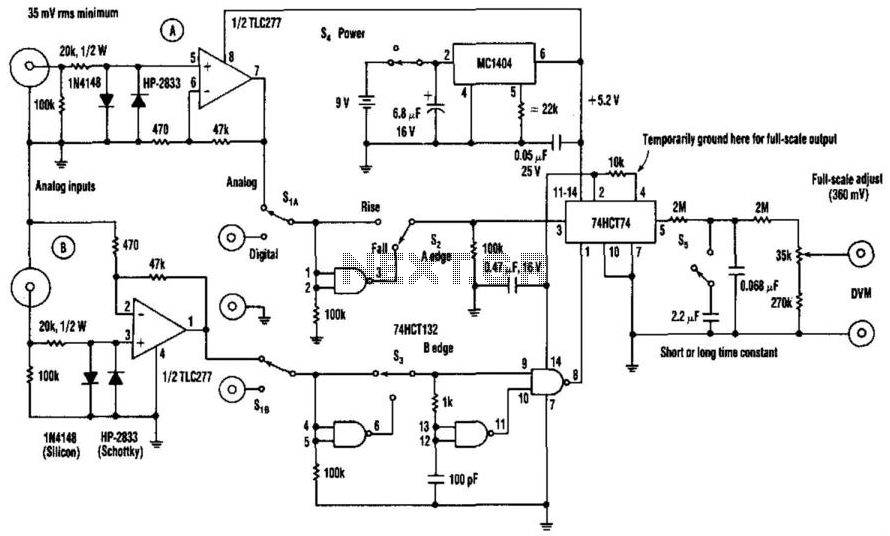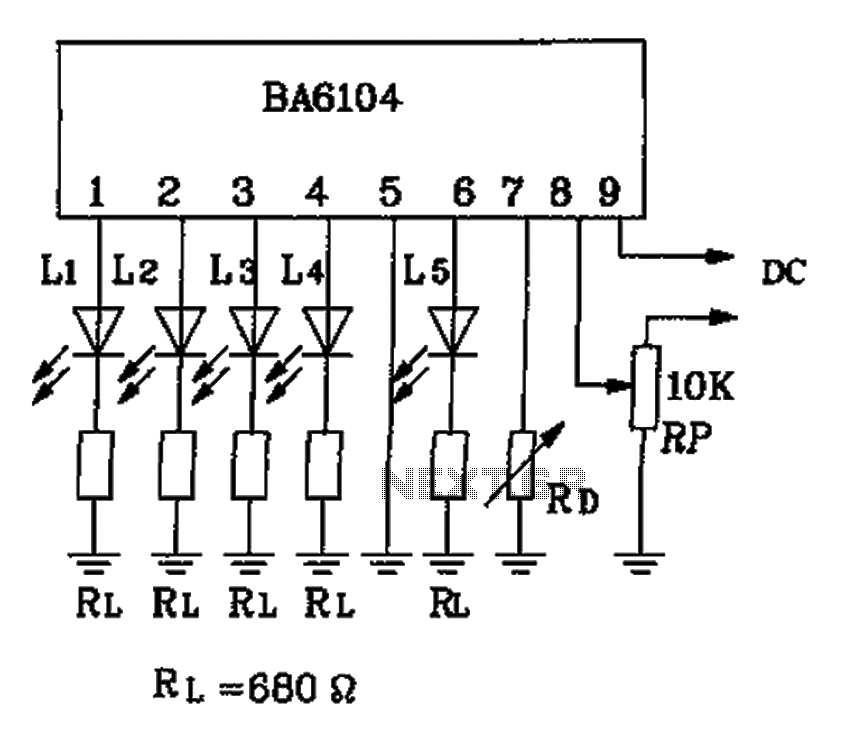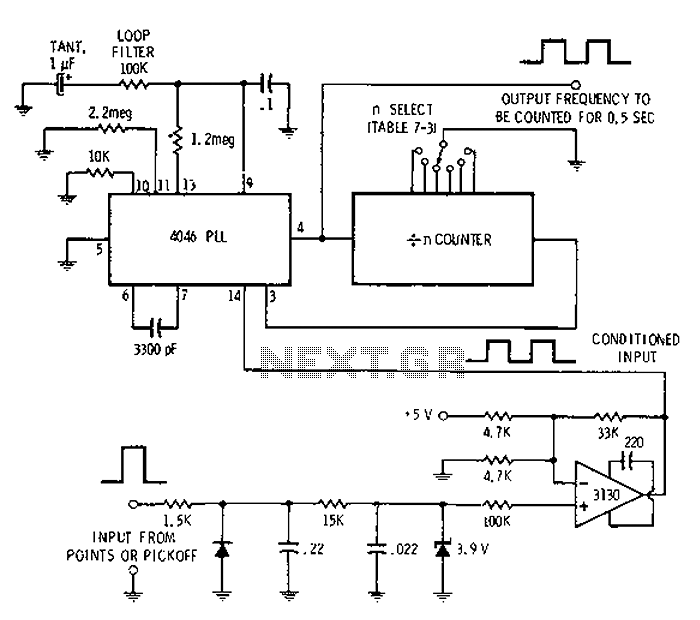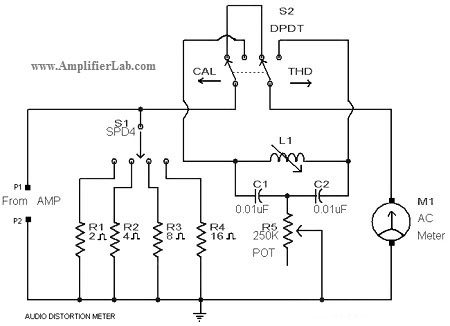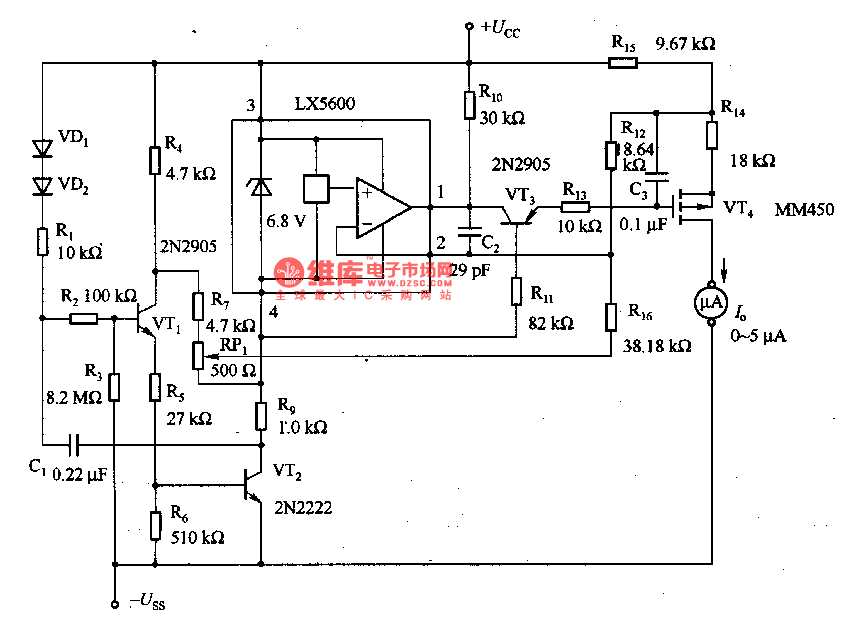
Thermometer meter slinger 1
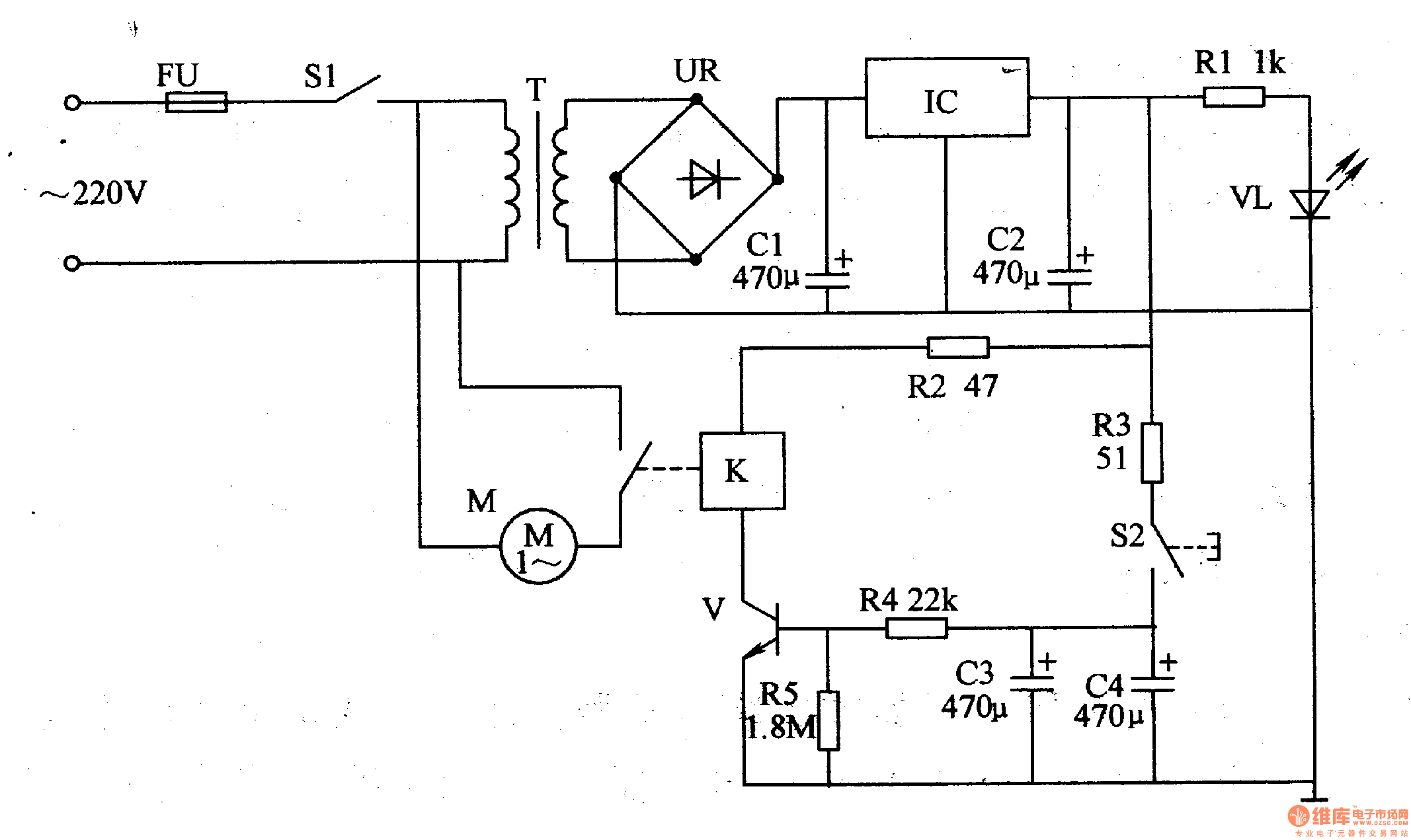
The thermometer meter slinger circuit consists of a power supply circuit and a meter slinger timing control circuit. The power supply circuit includes a fuse (FU), a power supply switch (S1), a power transformer (T), bridge rectifiers (UR), filter capacitors (C1, C2), and a voltage regulation integrated circuit (IC), along with a current limiting resistor.
The thermometer meter slinger circuit is designed to measure temperature and provide a controlled output based on the sensed temperature. The power supply circuit is crucial for supplying the necessary voltage and current to the entire system. It begins with the fuse (FU), which protects the circuit from overcurrent conditions. The power supply switch (S1) allows for the manual control of the circuit's power state.
The power transformer (T) steps down the mains voltage to a lower, usable level. The output from the transformer is then directed to the bridge rectifiers (UR), which convert the AC voltage to DC voltage. The filter capacitors (C1, C2) smooth out the rectified DC signal, reducing ripple and providing a steady voltage output. This stable DC voltage is essential for the operation of the integrated circuit (IC), which regulates the voltage to specified levels suitable for the circuit's components.
The current limiting resistor plays a critical role in protecting sensitive components from excessive current, ensuring reliable operation of the thermometer meter slinger circuit. The timing control circuit works in conjunction with the power supply to manage the operation of the meter slinger, allowing for accurate and timely temperature readings. Overall, this circuit is integral for applications requiring precise temperature measurements and control.The thermometer meter slinger circuit is composed of power supply circuit and meter slinger timing control circuit, it is shown in the figure 9-134. The power supply circuit is made of fuse FU, power supply switch S1, power transformer T, bridge rectifiers UR, filter capacitors C1, C2, there terminals steady voltage integrated circuit IC, current limiting r..
🔗 External reference
The thermometer meter slinger circuit is designed to measure temperature and provide a controlled output based on the sensed temperature. The power supply circuit is crucial for supplying the necessary voltage and current to the entire system. It begins with the fuse (FU), which protects the circuit from overcurrent conditions. The power supply switch (S1) allows for the manual control of the circuit's power state.
The power transformer (T) steps down the mains voltage to a lower, usable level. The output from the transformer is then directed to the bridge rectifiers (UR), which convert the AC voltage to DC voltage. The filter capacitors (C1, C2) smooth out the rectified DC signal, reducing ripple and providing a steady voltage output. This stable DC voltage is essential for the operation of the integrated circuit (IC), which regulates the voltage to specified levels suitable for the circuit's components.
The current limiting resistor plays a critical role in protecting sensitive components from excessive current, ensuring reliable operation of the thermometer meter slinger circuit. The timing control circuit works in conjunction with the power supply to manage the operation of the meter slinger, allowing for accurate and timely temperature readings. Overall, this circuit is integral for applications requiring precise temperature measurements and control.The thermometer meter slinger circuit is composed of power supply circuit and meter slinger timing control circuit, it is shown in the figure 9-134. The power supply circuit is made of fuse FU, power supply switch S1, power transformer T, bridge rectifiers UR, filter capacitors C1, C2, there terminals steady voltage integrated circuit IC, current limiting r..
🔗 External reference
